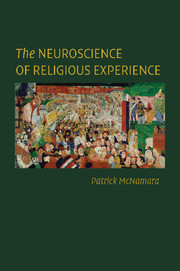Book contents
- Frontmatter
- Contents
- Preface
- Acknowledgments
- 1 God and the Self
- 2 On the Self and the Divided Self
- 3 Mechanisms and Dynamics of Decentering
- 4 Neurology of the Self
- 5 Neurology of Religious Experiences
- 6 Neurochemistry of Religiosity
- 7 Self-Transformation as a Key Function of Performance of Religious Practices
- 8 Self-Transformation through Spirit Possession
- 9 God Concepts
- 10 Religious Language
- 11 Ritual
- 12 Life-Span Development of Religiosity and the Self
- 13 The Evolution of Self and Religion
- References
- Index
7 - Self-Transformation as a Key Function of Performance of Religious Practices
Published online by Cambridge University Press: 30 October 2009
- Frontmatter
- Contents
- Preface
- Acknowledgments
- 1 God and the Self
- 2 On the Self and the Divided Self
- 3 Mechanisms and Dynamics of Decentering
- 4 Neurology of the Self
- 5 Neurology of Religious Experiences
- 6 Neurochemistry of Religiosity
- 7 Self-Transformation as a Key Function of Performance of Religious Practices
- 8 Self-Transformation through Spirit Possession
- 9 God Concepts
- 10 Religious Language
- 11 Ritual
- 12 Life-Span Development of Religiosity and the Self
- 13 The Evolution of Self and Religion
- References
- Index
Summary
Yen Hui: What is fasting of the heart?
Confucius: The goal of fasting is inner unity. This means hearing, but not with the ear; hearing, but not with the understanding; hearing with the spirit, with your whole being.…The hearing of the spirit is not limited to any one faculty, to the ear, or to the mind. Hence it demands the emptiness of all the faculties. And when the faculties are empty, then the whole being listens.
– Tzu, 1965, pp. 75–76Unless a grain of wheat falls into the earth and dies, it remains alone, but if it dies it bears much fruit. He who loves his life loses it but he who hates his life in this world will keep it to life eternal.
– John 12:24–25Introduction
In previous chapters I reviewed a considerable range of evidence concerning neural mediation of the sense of Self as well as neural and neurochemical mediation of religious experiences. It so happens that there is considerable overlap in the neuroanatomy of Self and of religious experience. Both rely heavily on limbic and right-sided anterior temporal and prefrontal networks. Now on the one hand, it should not be too surprising that Self and religious experience share the same neural networks, as it is the Self that experiences, and thus religious experience requires a Self for there to be religious experience at all.
- Type
- Chapter
- Information
- The Neuroscience of Religious Experience , pp. 145 - 166Publisher: Cambridge University PressPrint publication year: 2009



